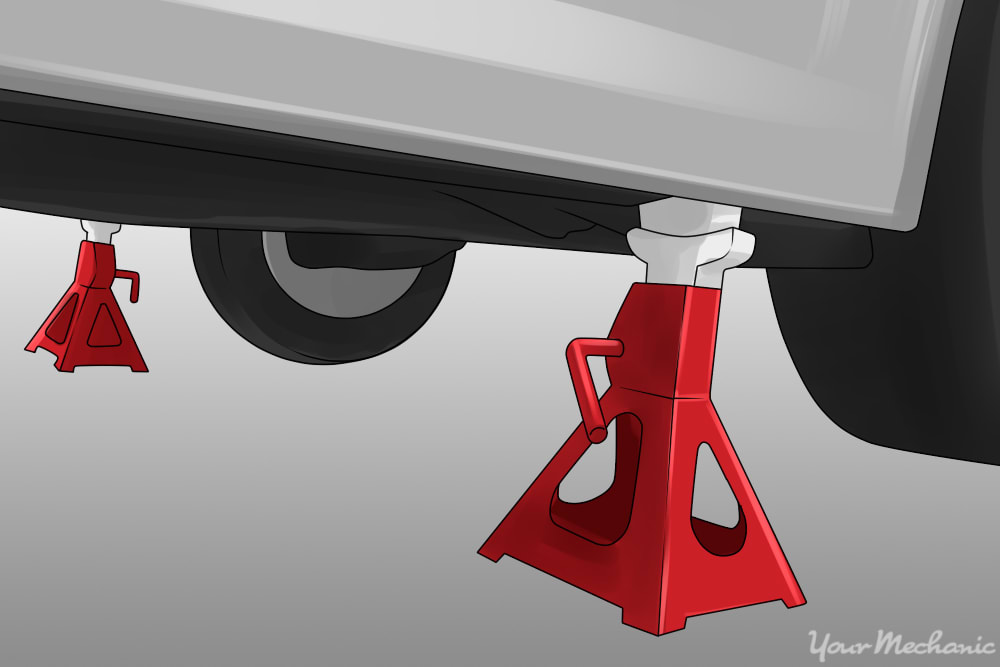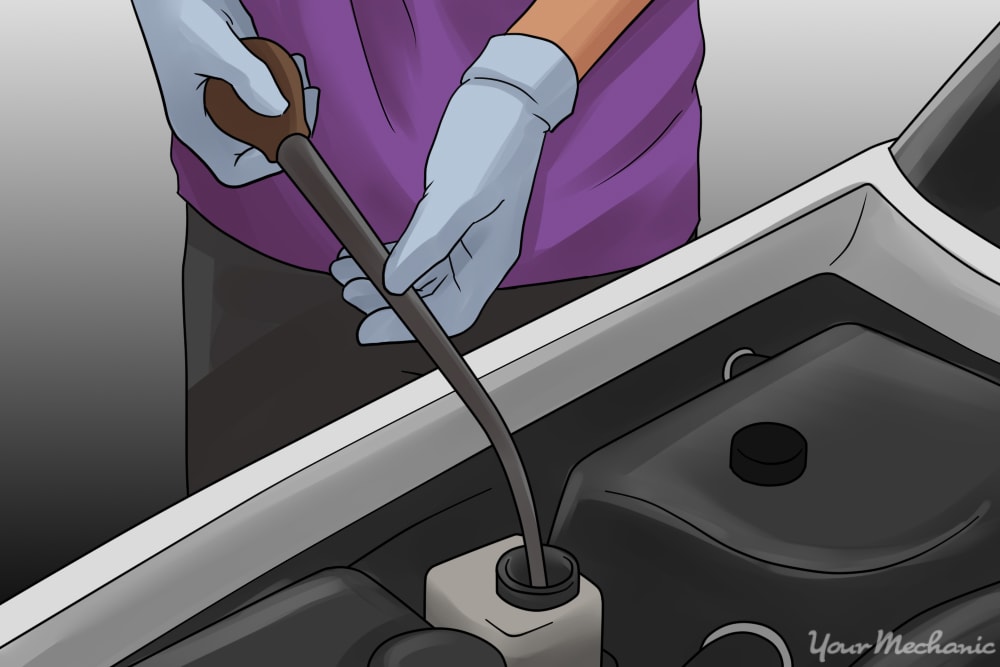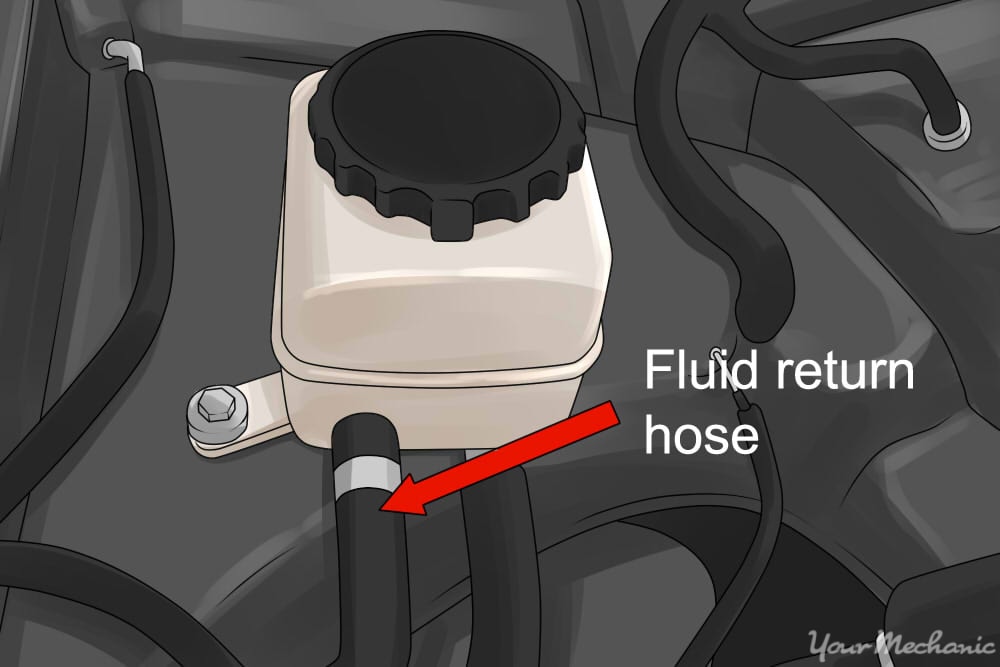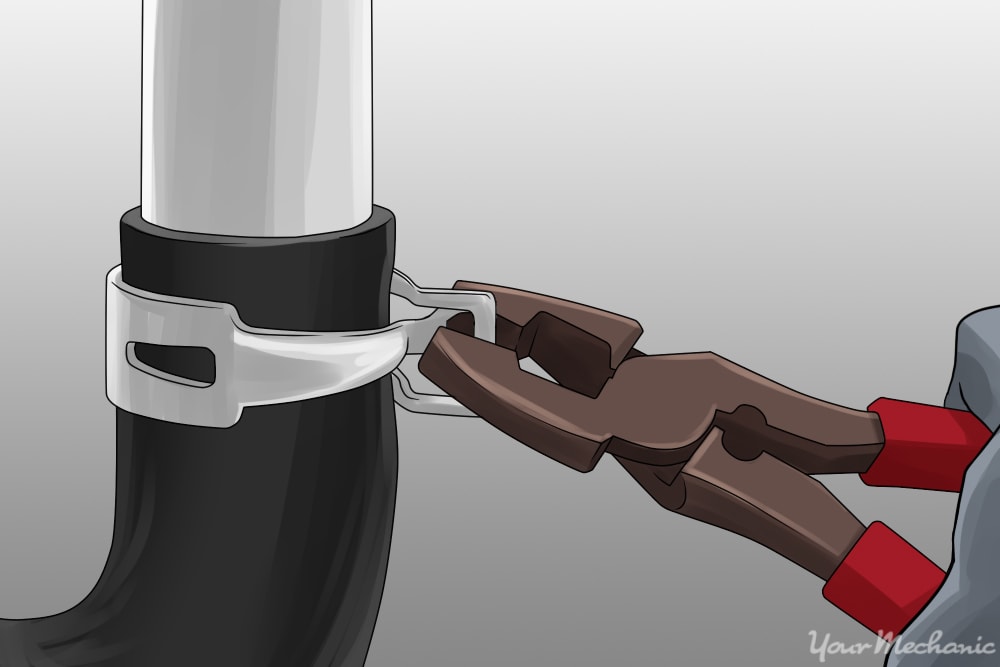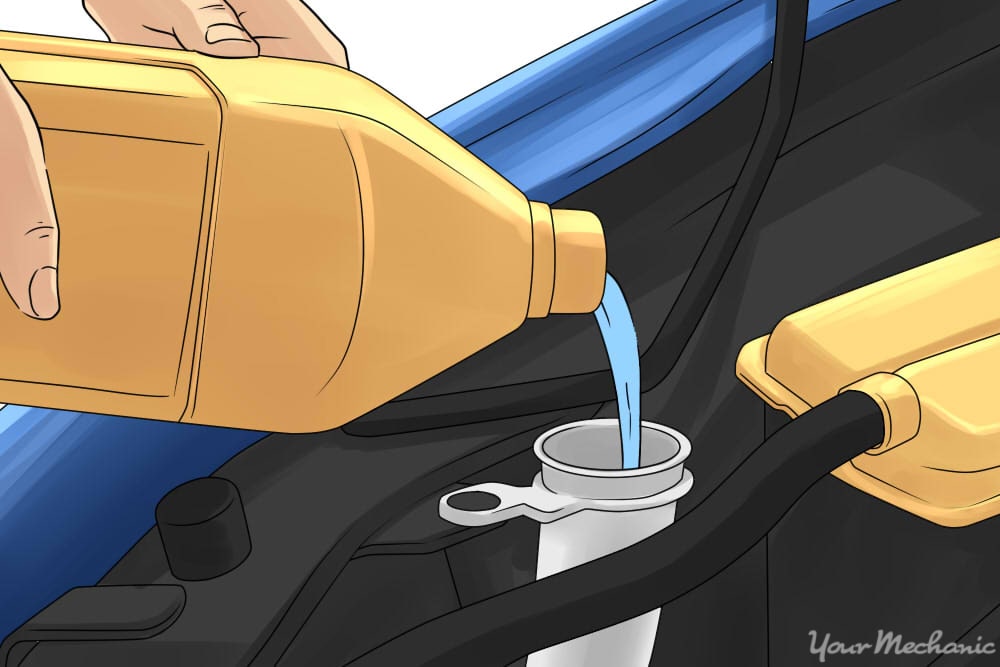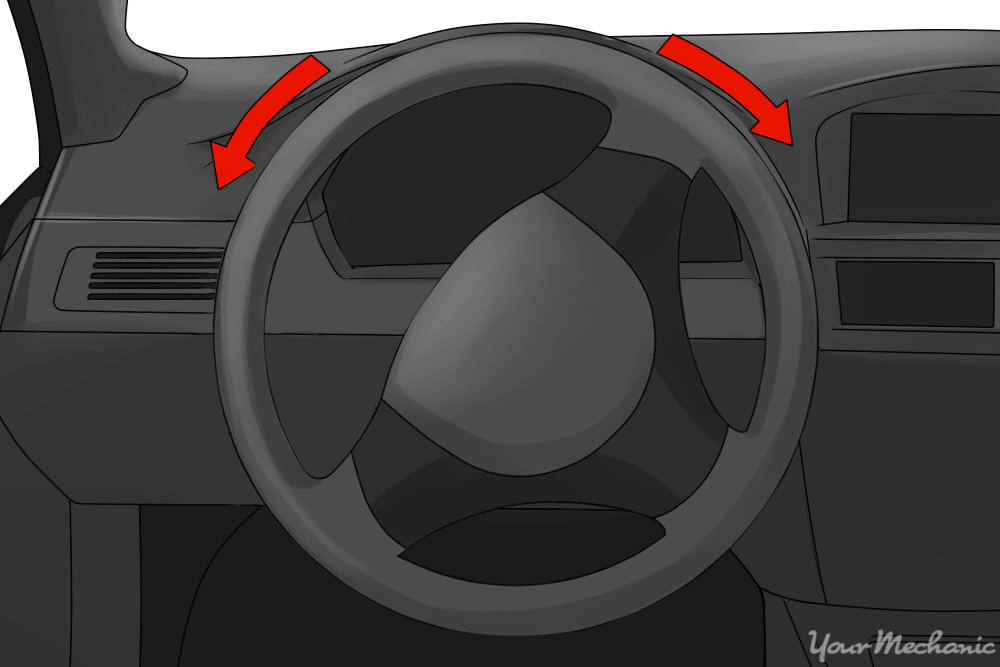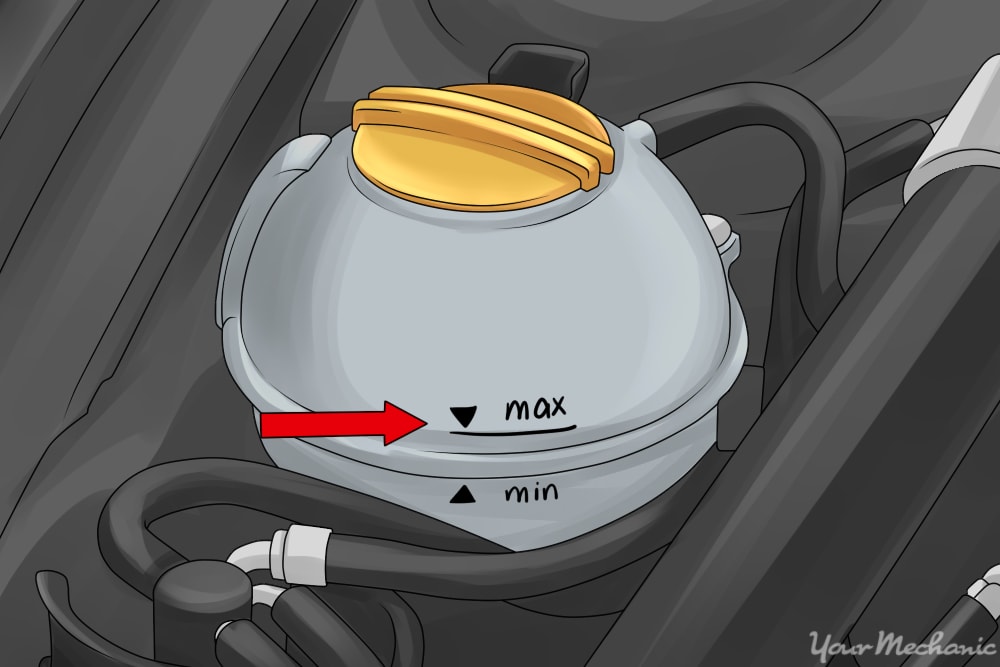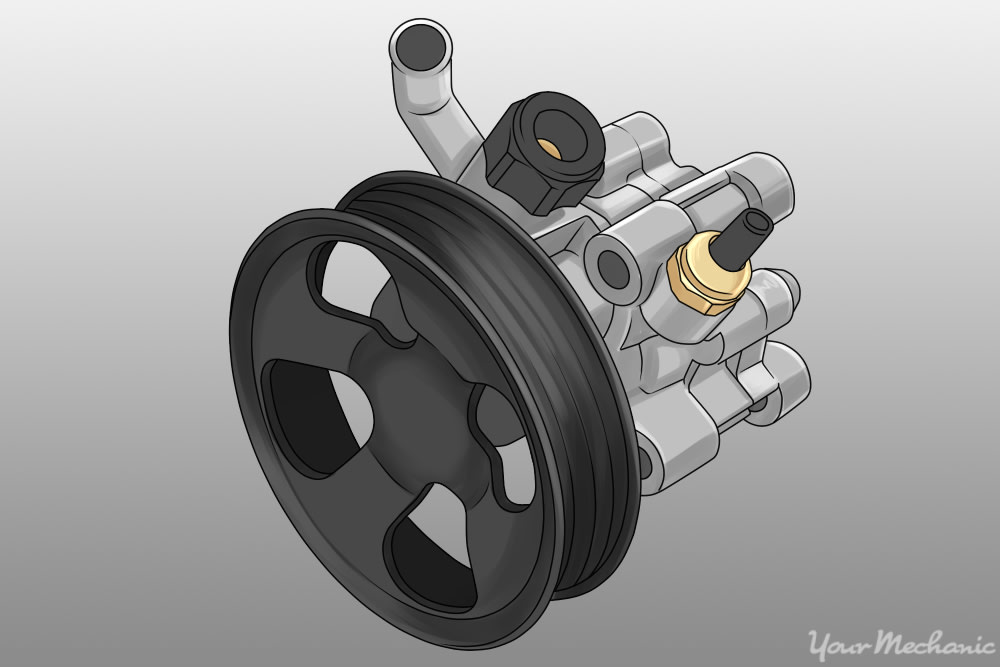

Modern cars are equipped with power steering which helps the driver easily steer the car by turning the wheel gently. Older cars do not have power steering and you had to use much more effort to turn the wheel while driving. With power steering, you can turn the steering wheel easily with one hand.
The power steering pump works by using hydraulic pressure to move a piston, which is attached to the steering gears that turn the tires. The power steering fluid can last for a very long time, sometimes even while driving as much as 100k miles.
You should replace the power steering fluid at the intervals specified in your car’s manual or if the fluid is dark and dirty looking. Since power steering fluid is not used up like gasoline, you will not have to refill it unless the level is low due to a leak.
Part 1 of 3: Drain out the old fluid
Materials Needed
- Drip Pan
- Funnel
- Gloves
- Jack
- Jack stands (2)
- Paper towels/rags
- Pliers
- Power Steering fluid
- Safety glasses
- Turkey baster
Wide-mouthed plastic bottle
Note: Make sure the power steering fluid is the correct type for your car as the pump won’t function properly with a different type of fluid. The owner’s manual of your car will list the specific type of power steering fluid and the quantity used.
Note: It is common for automatic transmission fluid to be used in the power steering system.
Tip: Try to buy more power steering fluid than you need as you will use some to flush and clean the power steering system.
Step 1: Lift the front of your vehicle. Place jack stands on both sides of the vehicle to secure it and prevent the car from toppling over while turning the wheel. Place a drain pan underneath the power steering pumps and reservoir.
- Note: Some vehicles have a drip catch underneath that you may need to remove in order to gain access to the steering system. If there is liquid inside the drip catch, then there is a leak somewhere that needs to be identified.
Step 2: Remove all possible fluid. Use the turkey baster to siphon out as much fluid as possible from the reservoir.
When there is no fluid left in the reservoir, turn the steering wheel all the way to the right and then turn it all the way to the left. This is maneuver is called turning the wheel “lock to lock” and will help pump more fluid back into the reservoir.
Repeat this step and try to get as much fluid as you can out of the system to reduce the mess later on in the process.
Step 3: Identify the fluid return hose. You can find the fluid return hose next to the feed hose.
The feed hose moves the fluid from the reservoir into the power steering pump and is subject to higher pressures than the return hose. The seals on the feed hose are also stronger and harder to remove.
- Tip: The return hose usually goes straight down from the reservoir and will connect to the rack and pinion assembly. The hose used for the return line is typically smaller in diameter than the feed line and is sometimes located at a lower position than the feed line.
Step 4: Place the drip pan. Keep a drip pan under the return hose before you remove it.
Step 5: Disconnect the return hose. Remove the clamps with pliers and disconnect the fluid return hose.
Be prepared for spills as the power steering fluid will come out of both ends of the hose.
- Tip: You can use the funnel and plastic bottle to help collect the liquid from both ends.
Step 6: Pump out all possible fluid. Turn the wheel lock-to-lock in order to pump out as much fluid as possible.
Warning: Safety glasses are very important in this step so make sure you are wearing them. Gloves and long sleeves will protect you and keep you clean.
Tip: Make sure your drip pan is set up properly before performing this step. Put paper towels or rags on top of anything that might get fluid on it. Setting up the rags beforehand reduces the liquid that you will need to clean off later.
Part 2 of 3: Flush the power steering system
Step 1: Fill reservoir halfway with fresh fluid. With the lines still disconnected, add fresh power-steering fluid to fill a little over half the reservoir. This will clean out any remaining liquid that you could not pump out.
Step 2: Turn the wheel “lock-to-lock” with the engine running. Make sure the reservoir isn’t completely empty and start the engine. Turn the wheel lock-to-lock and repeat it for a few times to pump new fluid throughout the system. Make sure to check the reservoir as you don’t want it going completely empty.
When the fluid coming out of the lines looks like the fluid going in, the system has been fully flushed and the old fluid has been removed completely.
- Tip: Have a friend help you with this step. They can turn the wheel from side to side while you make sure the reservoir doesn’t go empty.
Part 3 of 3: Fill the reservoir with fresh fluid
Step 1: Reconnect the return hose. Attach the hose clamp securely and ensure that all fluid in the area has been cleaned up so that you do not mistake old fluid spills for a fresh leak.
After cleaning the area, you can check the system for leaks.
Step 2: Fill the reservoir. Pour the power steering fluid into the reservoir until it reaches the Full level.
Put the cap on the reservoir and run the engine for about 10 seconds. This will start bleeding the system of air and the fluid level will start to go down.
Top off the reservoir again.
- Note: Most cars have two sets of fluid levels. Since the system is still cold for now, only fill the reservoir to the Cold Max level. Later, when you have the engine running for longer, the fluid level will start to move up.
Step 3: Check for leaks. Start the engine again and take a look at the hoses while the car is still lifted up in the air using the jack stands.
Keep an eye on the fluid level and add more as necessary.
- Note: It is normal for some bubbles to appear in the reservoir as a result of the bleeding process.
Step 4: Turn the steering wheel lock-to-lock with the engine running. Do this for a few minutes or until the pump is silent. The pump will make a slight buzzing noise if there is still air trapped so when the pump is silent, you can be confident that it is fully bled.
Check the fluid level one last time before lowering the car back onto the ground.
Step 5: Drive the car. With the car back the ground, start the engine and test the steering wheel with the weight on the tires. If everything seems okay, then it is time for a short test drive.
Replacing the power steering fluid will help your steering pump last the lifetime of the car. Replacing the fluid can also help make the steering wheel easier to turn so if you’re struggling to move the wheel, this is a good option to consider.
If you have any difficulties with this job, one of our certified technicians here at YourMechanic would be able to assist you in flushing your power steering system.



